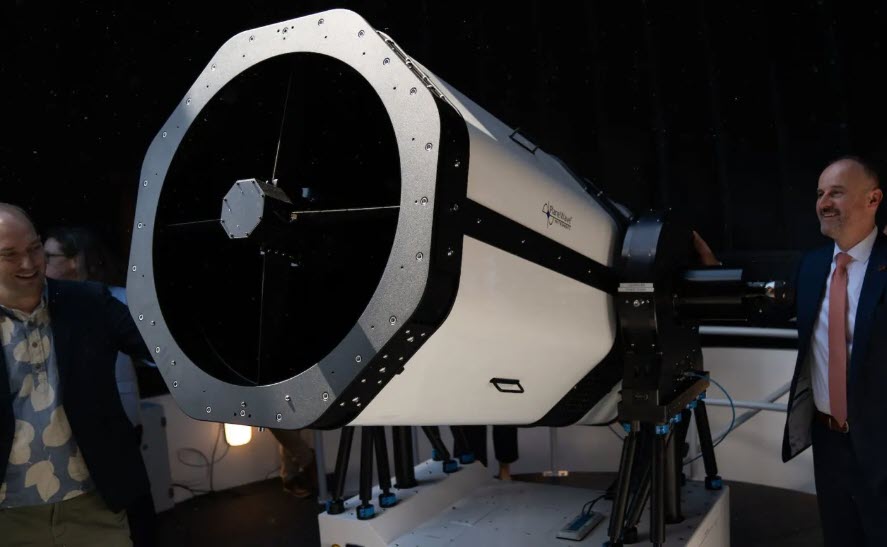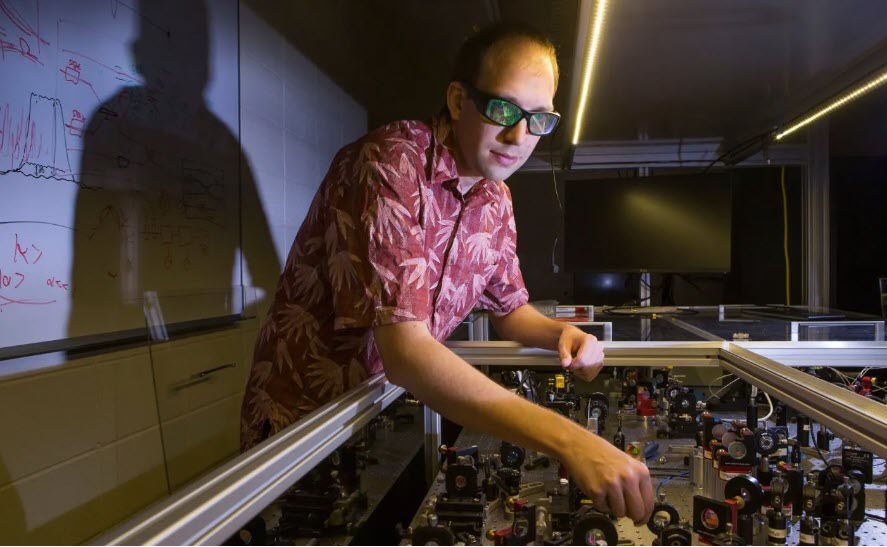
The new telescope uses lasers and optics instead of radio waves. Photo: ANU.
More than half a century since Neil Armstrong’s first steps on the Moon were broadcast from the Honeysuckle Creek Tracking Station in the ACT’s Namadgi National Park, we have another starring role to play in space exploration.
This time, courtesy of a new telescope at the Mt Stromlo Observatory, managed by the Australian National University.
The Quantum Optical Ground Station is designed to support “high-speed advanced communications” with satellites and crewed missions ranging from low-Earth orbit to the Moon, Mars and beyond.
Where traditional technology relies on radio waves, the new telescope uses optics and lasers to send and receive terabytes of high-definition photos, video and audio within seconds. From next year, it’s set to capture the moment humans next arrive on the Moon for NASA’s Artemis mission.
ANU Associate Professor Francis Bennet described the station as the “preeminent technology of its kind in Australia”.
“Using lasers, the ground station will allow us to communicate with satellites and crews hurtling through space, supporting major crewed space missions and future space exploration,” Associate Professor Bennet said.
“We have built systems that are cutting edge in their capability, and upgrading them to be compatible with NASA missions will help permanent operations on the Moon, and improve astronauts’ ability to connect back with Earth and allow high-definition video from the Moon and Mars.”

Associate Professor Francis Bennet: the Mt Stromlo station is the “preeminent technology of its kind in Australia”. Photo: ANU.
The station received funding from the ACT Government’s Priority Investment Program.
ACT Chief Minister Andrew Barr described it as a “key national asset that positions Australia and the Indo-Pacific region to collaborate and compete on the global stage”.
“Canberra has the capabilities to support space industry success and to take advantage of the enormous investment being made globally in space through our growing knowledge economy,” he said.
ANU Institute for Space director Professor Anna Moore said the optical ground station was a “stellar” example of how ANU and Australian research are making significant contributions to the future of space technology and exploration.
“With this technology, we will also be able to better access unused data and information about the universe,” Professor Moore said.
“We are thrilled that this station is now built and excited about the pivotal role it will play in our exploration and understanding of space. We look forward to working with our project partners on this nation-leading technology for many years to come.”
The ANU Quantum Optical Ground Station also received additional support from the Australian Space Agency, CSIRO and TESAT.
















